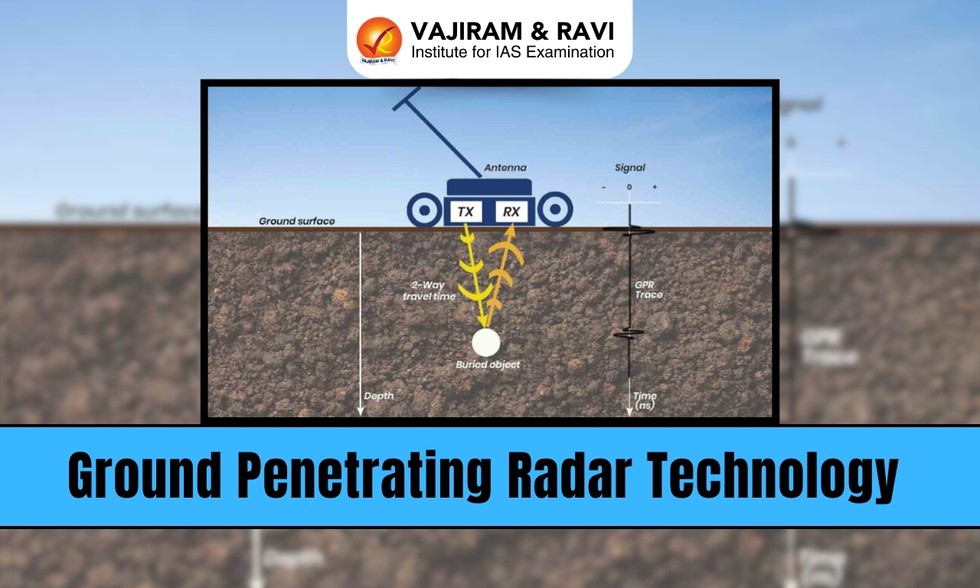About Ground Penetrating Radar Technology:
- It is a geophysical method that uses high-frequency electromagnetic pulses to image the subsurface of the Earth or other solid materials.
- It is a non-destructive detection and imaging method which identifies subsurface elements either underground or within a surface such as concrete.
- Working of Ground Penetrating Radar Technology
- GPR uses a transmitter antenna to send high-frequency, pulsed, electromagnetic waves (typically from 10 MHz to 1,000 MHz) into the subsurface to acquire information.
- The wave spreads out and travels downward until it hits a buried object or boundary with different electromagnetic properties
- Part of the wave energy is reflected or scattered back to the surface, while part of the energy continues to travel downward.
- The wave is reflected back to the surface to a receiver antenna that records the amplitude of the reflected energy and the arrival time of the wave on a digital storage device
- Applications of Ground Penetrating Radar Technology
- GPR can detect both metallic and non-metallic objects, giving it a wide range of applications.
- It reveals all types of utilities, including electrical conduit, steam pipes, telecommunications lines, gas & oil lines, water lines, and sewer & storm pipes.
